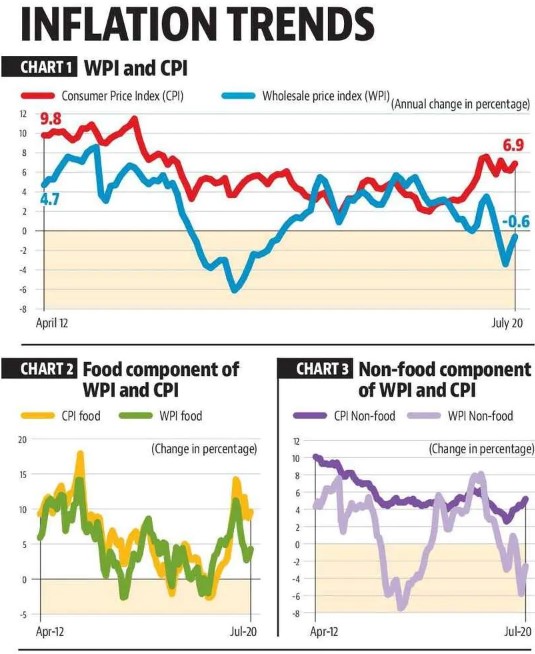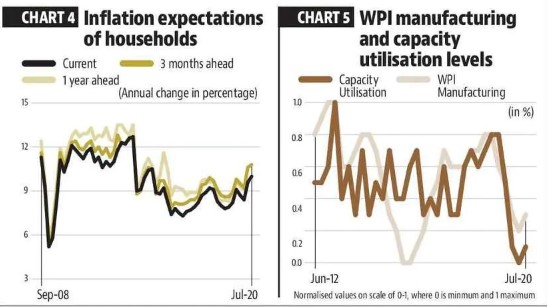Focus: GS-III Indian Economy
Introduced
- Consumer Price Index (CPI), India’s benchmark inflation measure, grew at 6.9% in the month of July.
- Headline inflation has been growing at more than 6%, the upper limit of RBI’s tolerance level, since December 2019.
- March was the only exception. India’s other inflation measure, Wholesale Price Index (WPI), has been contracting since April 2020.
Wholesale and retail inflation are diverging once again

- Food items have a share of almost 40% in the CPI basket. This is just 24% for WPI.
- Therefore, food price hikes generate stronger tailwinds for CPI.
- But the food components of CPI and WPI actually move very closely with each other.
- Difference in the weightage of food items is not the only reason for divergence in CPI and WPI.
- A comparison of non-food components of CPI and WPI brings out this fact clearly.
- WPI is focused on capturing producer costs, while CPI is representative of the average consumer basket of an Indian household.
- The CPI basket is decided after the National Statistical Office’s consumption expenditure surveys.
- CPI has components such as housing and recreation. WPI has crude petroleum and engineering goods
Inflation Expectations

- Inflation expectations of households are still high, although Inflation expectations of households have come down compared to what they were six-seven years ago.
- They are significantly above RBI’s upper band of 6%.
- RBI data also shows that trajectory of current and future inflation expectation for households has been almost identical in India.
-Source: Hindustan Times



